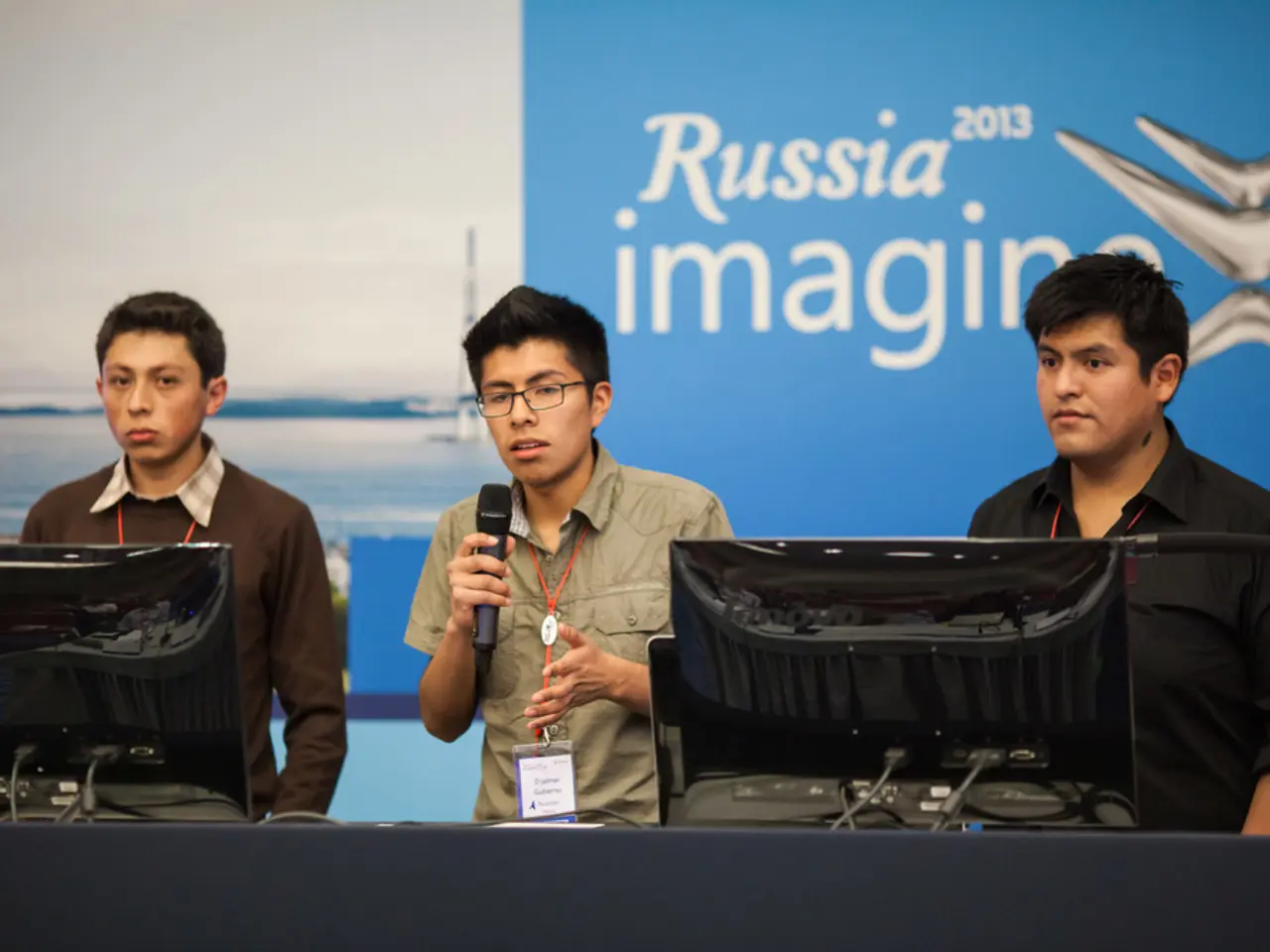Escalating tariff disputes and trade turbulences are causing significant increases in construction costs and build durations for data centers.
In a significant shift for the tech industry, Northern Europe is at the forefront of a wave of new data center construction and AI infrastructure deployment. This surge is driven by the exploding needs of larger AI models, transforming datacenter construction and AI infrastructure availability across the region [1][2][3][4].
The growing demand for compute power is fueling this trend. AI startups, researchers, and large enterprises require massive resources for training and deploying generative AI and frontier models, leading to a surge in demand for AI-optimized data centers and GPU clusters [1]. Companies like Nebius, an Amsterdam-based AI cloud platform, are expanding GPU clusters in Europe, with plans to scale to over 100 megawatts of power capacity by the end of 2025 [1].
Strategic alliances and investments are also driving this growth. Hypertec, a Canadian company, is investing heavily in Europe, aiming to build up to 2 gigawatts (GW) of AI-dedicated data center and compute capacity through 2028. This includes deploying nearly 100,000 NVIDIA Blackwell and future-generation GPUs. Northern European countries, along with the UK, France, Italy, and Portugal, are priority markets for these new AI data centers [2].
However, the journey towards AI infrastructure expansion is not without challenges. Construction costs for datacenters in Europe are on the rise, with an average increase of 6.5% to $9.1 million per MW expected by 2024 [5]. Land, building, powered shell, electrical systems, HVAC, mechanical, and cooling are the most costly elements in datacenter builds. Moreover, skills shortages, geopolitical turbulence, and design complexity are hampering datacenter operators [6].
One often overlooked weak link in datacenter infrastructure is cabling, with 70% of operators agreeing that poor-quality cabling can compromise performance and reduce resilience [6]. Furthermore, more than half of operators expect the AI craze to shorten the lifespan of current datacenters due to outgrowing power, cooling, and bandwidth capacities [7].
The EU is also investing in digital infrastructure like the AI-on-Demand Platform, which provides unified access to AI tools, datasets, and computing resources across Europe, helping bridge fragmented compute availability and accelerating AI innovation for research and industry [3]. Despite these efforts, the tech industry is facing equipment supply chain headaches caused by tariffs and geopolitical issues [8].
The news of this rapid expansion could worry UK Premier Keir Starmer, whose government wants to speed up datacenter building for AI ambitions. However, protectionist policies, such as those claimed by Onnec Nordics General Manager Niklas Lindqvist to limit the quality of infrastructure datacenter operators can deliver, could pose a challenge [6].
In a bid to address these challenges, the EU is being warned to clamp down on water rules or risk losing datacenter builders. As the demand for AI infrastructure continues to grow, Northern Europe is poised to remain at the forefront of this transformative shift, essential for supporting the continent’s growing AI ecosystem and maintaining competitive AI research and commercial deployment capabilities [1][2][3][4].
References: [1] https://www.datacenterdynamics.com/content-and-strategy/europe-ai-infrastructure-boom-driven-demand-larger-models/ [2] https://www.datacenterdynamics.com/content-and-strategy/hypertec-to-build-2-gigawatts-of-ai-dedicated-data-center-capacity-in-europe-by-2028/ [3] https://ec.europa.eu/digital-single-market/en/ai-on-demand-platform [4] https://www.reuters.com/business/ai-server-shipments-continue-strong-growth-despite-us-export-restrictions-2021-09-29/ [5] https://www.datacenterknowledge.com/archives/2021/10/27/cost-to-build-a-data-center-in-europe-rises-65-to-9-1-million-per-mw-in-2024/ [6] https://www.datacenterknowledge.com/archives/2021/10/27/onnec-highlights-cabling-as-an-often-overlooked-weak-link-in-datacenter-infrastructure/ [7] https://www.datacenterknowledge.com/archives/2021/10/27/more-than-half-of-operators-expect-the-ai-craze-to-shorten-the-lifespan-of-current-datacenters-due-to-outgrowing-power-cooling-and-bandwidth-capacities/ [8] https://www.datacenterknowledge.com/archives/2021/10/27/eu-warned-to-clamp-down-on-water-rules-or-risk-losing-datacenter-builders/
- The increasing demand for compute power in fields like finance, business, education-and-self-development, and the cloud industry is contributing to the trend of new data center construction and AI infrastructure deployment in Northern Europe.
- Companies such as Nebius, based in Amsterdam, are expanding their AI-optimized data centers and GPU clusters in Europe, with plans to reach over 100 megawatts of power capacity by 2025.
- Strategic investments and alliances are also driving this growth, with Canadian company Hypertec planning to build up to 2 gigawatts of AI-dedicated data center and compute capacity in Europe by 2028.
- However, the expansion of AI infrastructure faces challenges, including rising construction costs, skills shortages, geopolitical turbulence, and design complexity, as well as concerns about poor-quality cabling and the potential shortening of datacenter lifespans due to outgrowing power, cooling, and bandwidth capacities.




